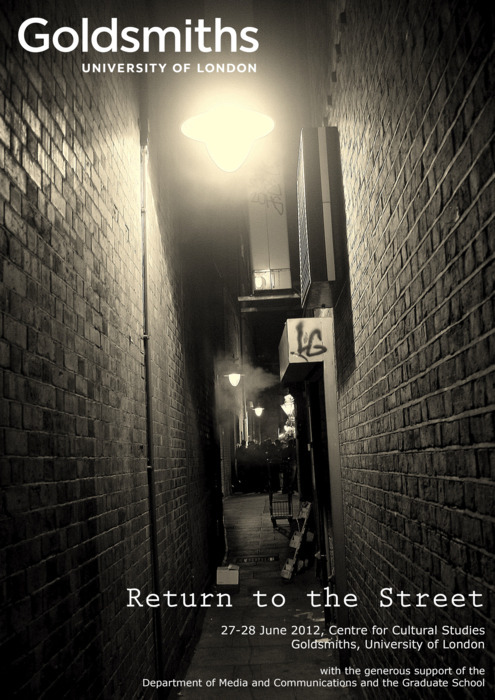In the
SENSEable and
augmented cities of the near future it may be expected that traditional print media will become obselete. When your internet search history can be monitored remotely on the fly and appropriate adverts posted to you directly via your smartphone, why would anyone bother handing out paper flyers or posting them to the wall?
Something that has been interesting me recently is the way that old media are re-purposed as their prior uses are assumed by new media. If as
Marshall McLuhan said "The medium is the message", could it be that traditional forms of print media such as the
fly-post will communicate more fully on their own terms, unburdened of the uses to which they had previously been put? Perhaps, or perhaps not. What we can expect that they will be used to carry different messages and find new audiences for those ready to exploit them imaginatively. Might we also find that they afford the willing unexpected liberties?
He may be said to live in the eye of the public as much, if not more, than any other man of his day; and is, whatever pretenders may choose to think, or cavillers to say to the contrary, essentially a public character. He is a literary man in a sense at once the most literal and extensive, and he caters for the major part of the population almost the only literature that they ever peruse. He is a publisher to boot, whose varied and voluminous works, unscathed by criticism, are read by all the world, and go through no end of editions. It is an axiom of somebody's - whose, we forget just now - that most men look at the world, and all things in it, through the medium of their own profession. If that be the case; how does the billsticker regard it? What tricks does his fancy play him? What are the myths ever revolving before his imagination? Is there a golden age looming in the distant future of his hopes? A good time coming, when every wall and hoarding, every house-front, window-shutter, and now interdicted inclosure - from the "palaces of crowned kings," down to the humblest "habitations of all things that dwell" - shall be patent to his paste-brush, open as charity to his broadsheet, and when he shall no longer be compelled to trudge beneath his heavy load in all weathers, through weary miles of mud and rain, in search of a sanctuary where the art and mystery of his calling is not forbidden?
[...] it may chance that an amateur billsticker may get himself into trouble, through ignorance of details with which the regular professional is intimately acquainted. Though the majority of hoardings - if bill-stickable at all - are free to all paste-pots, that is by no means the case with them all. Many which are of long standing are private property, and are let in compartments to the members of the profession, who of course tolerate no trespassers upon their domains, and would inflict the penalties of invasion upon any one caught in the act of violating their privileges. To such irregular aspirants to this honourable profession we commend the admonition, familiar to us on brick-walls and park-enclosures - STICK NO BILLS.
The text above can be found in full on Lee Jackson's excellent website
Victorian London.
Further information about fly-posting and activism can be found on Urban75. Readers should be aware that fly-posting in the UK is covered by the Anti-social Behaviour Act 2003 and can incur fines of between £50 and £2500.
